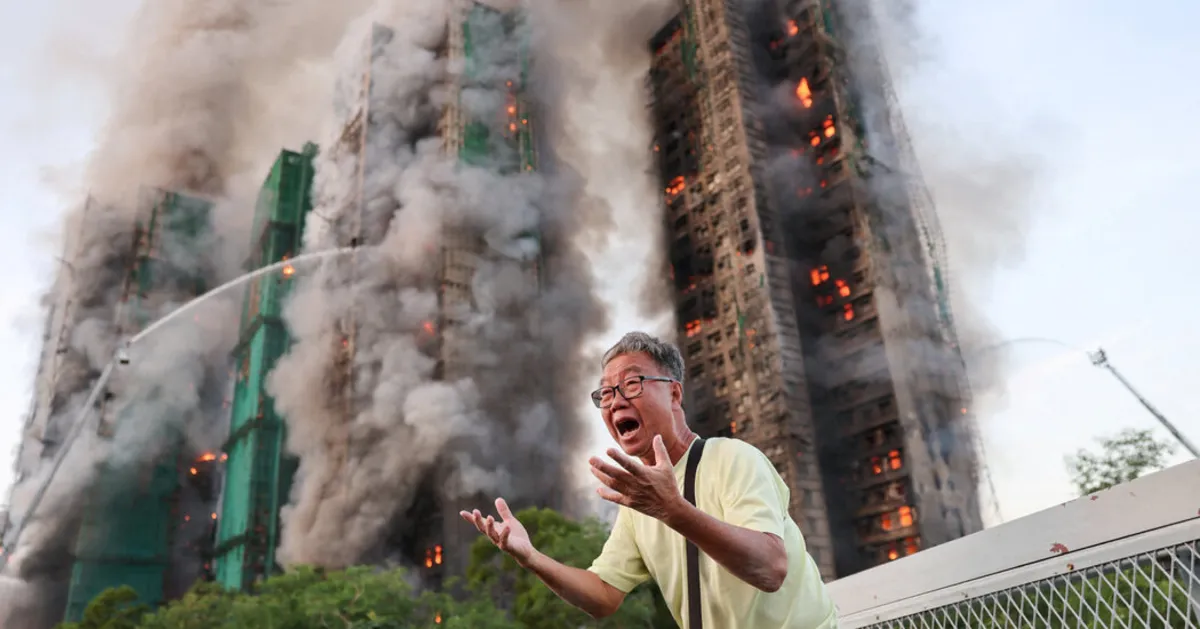
On Wednesday, a devastating fire erupted in three high-rise apartment towers in Hong Kong, sending bright flames shooting from multiple floors and creating thick plumes of smoke that were captured in numerous videos from the scene. The incident has drawn significant attention due to the severe consequences and the dramatic visuals of the fire.
According to reports from Radio Television Hong Kong, the city’s public broadcaster, the blaze has tragically resulted in the deaths of four individuals. Additionally, two people have sustained critical injuries, while another person is currently in stable condition. The rapid response from emergency services has been crucial in managing the situation and assisting those affected by the fire.
The high-rise towers were notably covered in bamboo scaffolding, a common practice in Hong Kong for both new constructions and building repairs. This type of scaffolding, while widely used, poses significant fire risks due to its flammable nature, especially when compared to the metal scaffolding that is more commonly utilized in other major cities around the globe. The flammability of bamboo scaffolding raises important questions about safety standards in construction practices.
The local community has expressed deep concern over the incident, highlighting the need for improved safety protocols regarding fire prevention in high-rise buildings. As investigations into the cause of the fire begin, city officials are expected to review existing regulations surrounding construction materials and fire safety measures to prevent similar tragedies in the future.
The fire at the Hong Kong high-rise apartment towers is a stark reminder of the potential dangers associated with construction practices in urban environments. As more information becomes available, the focus will undoubtedly shift toward enhancing safety measures to protect residents and prevent such incidents from occurring again.